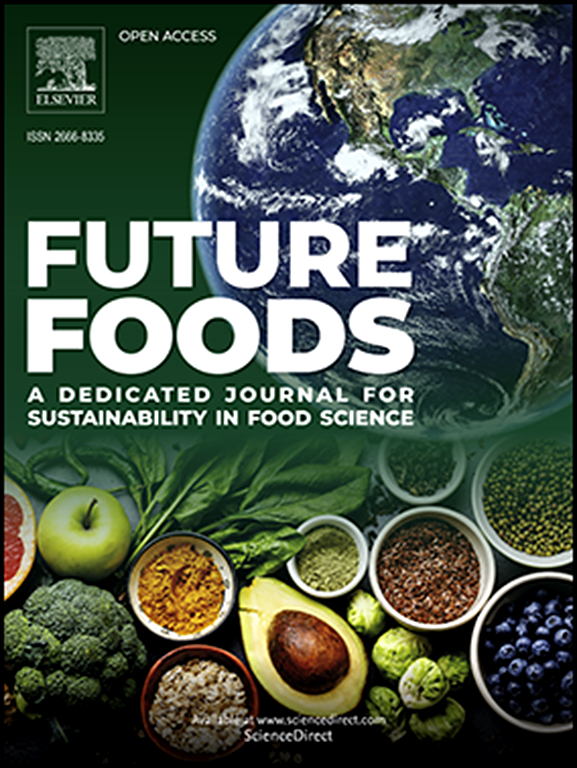Chitosan and gelatin based antimicrobial composite coatings functionalized with natural active agents for preservation of pork meat
IF 7.2
Q1 FOOD SCIENCE & TECHNOLOGY
引用次数: 0
Abstract
Pork is rich in protein, but its high moisture content leads to microbial spoilage, and rapid post-harvest quality degradation. Natural biopolymer-based coatings have emerged as a promising solution for preserving the food. In this research, edible coatings composed of chitosan (CH), gelatin (GL), Aloe vera gel (AVG), and nanoemulsified carvacrol (CNE) were developed to extend shelf life of vacuum-packaged pork stored at 4 °C. Five coatings i.e., CH/GL, CH/GL/AVG, CH/GL/AVG/CNE-1 (1 % CNE), CH/GL/AVG/CNE-2 (2 % CNE), and CH/GL/AVG/CNE-5 (5 % CNE) were tested. The addition of A. vera gel and CNE significantly boosted the coatings' antimicrobial efficacy, reducing mesophilic and psychrotrophic bacteria, yeast, and mold counts by 3–4 log CFU/g in the CH/GL/AVG/CNE-2 and CH/GL/AVG/CNE-5 coated samples compared to the uncoated control. Moreover, the coatings effectively slowed total volatile bases-nitrogen (TVB-N) and thiobarbituric acid (TBA) formations maintaining quality of the vacuum-packed pork for up to 16 days compared to 10 days in case of the control. The CH/GL/AVG/CNE-2 coated pork also had a sensory score above 7.8 throughout the storage period, while that for the uncoated meat dropped below 5. Overall, CH/GL/AVG/CNE-2 was effective edible coating that extended the shelf life of vacuum-packaged pork by 6 days in refrigerated conditions.

求助全文
约1分钟内获得全文
求助全文
来源期刊

Future Foods
Agricultural and Biological Sciences-Food Science
CiteScore
8.60
自引率
0.00%
发文量
97
审稿时长
15 weeks
期刊介绍:
Future Foods is a specialized journal that is dedicated to tackling the challenges posed by climate change and the need for sustainability in the realm of food production. The journal recognizes the imperative to transform current food manufacturing and consumption practices to meet the dietary needs of a burgeoning global population while simultaneously curbing environmental degradation.
The mission of Future Foods is to disseminate research that aligns with the goal of fostering the development of innovative technologies and alternative food sources to establish more sustainable food systems. The journal is committed to publishing high-quality, peer-reviewed articles that contribute to the advancement of sustainable food practices.
Abstracting and indexing:
Scopus
Directory of Open Access Journals (DOAJ)
Emerging Sources Citation Index (ESCI)
SCImago Journal Rank (SJR)
SNIP
 求助内容:
求助内容: 应助结果提醒方式:
应助结果提醒方式:


